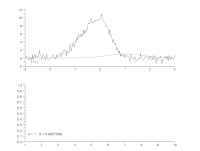
Photo from wikipedia
Numerous methods have been used in the spatial prediction of soil salinity. However, the most suitable method is still unknown in arid irrigation regions. In this paper, 78 locations were… Click to show full abstract
Numerous methods have been used in the spatial prediction of soil salinity. However, the most suitable method is still unknown in arid irrigation regions. In this paper, 78 locations were sampled in salt-affected land caused by irrigation in an arid area in northern China. The geostatistical characteristics of the soil pH, Sodium Adsorption Ratio (SAR), Total Salt Content (TSC), and Soil Organic Matter (SOM) of the surface (0–20 cm) and subsurface (20–40 cm) layers were analyzed. The abilities of the Inverse Distance Weighting (IDW), Ordinary Kriging (OK), and CoKriging (CK) interpolation methods were compared, and the Root Mean Square Error (RMSE) was used to justify the results of the methods. The results showed that the spatial distributions of the soil properties obtained using the different interpolation methods were similar. However, the surface layer exhibits more spatial heterogeneity than the subsurface layer. Based on the RSME, the nugget/sill value and range significantly affected which method was the most suitable. Lower nugget/sill values and lower ranges can be fitted using the IDW method, but higher nugget/sill values and higher ranges can be fitted using the OK method. These results provide a valuable reference for the prediction of soil salinity.
Journal Title: Agronomy
Year Published: 2021
Link to full text (if available)
Share on Social Media: Sign Up to like & get
recommendations!